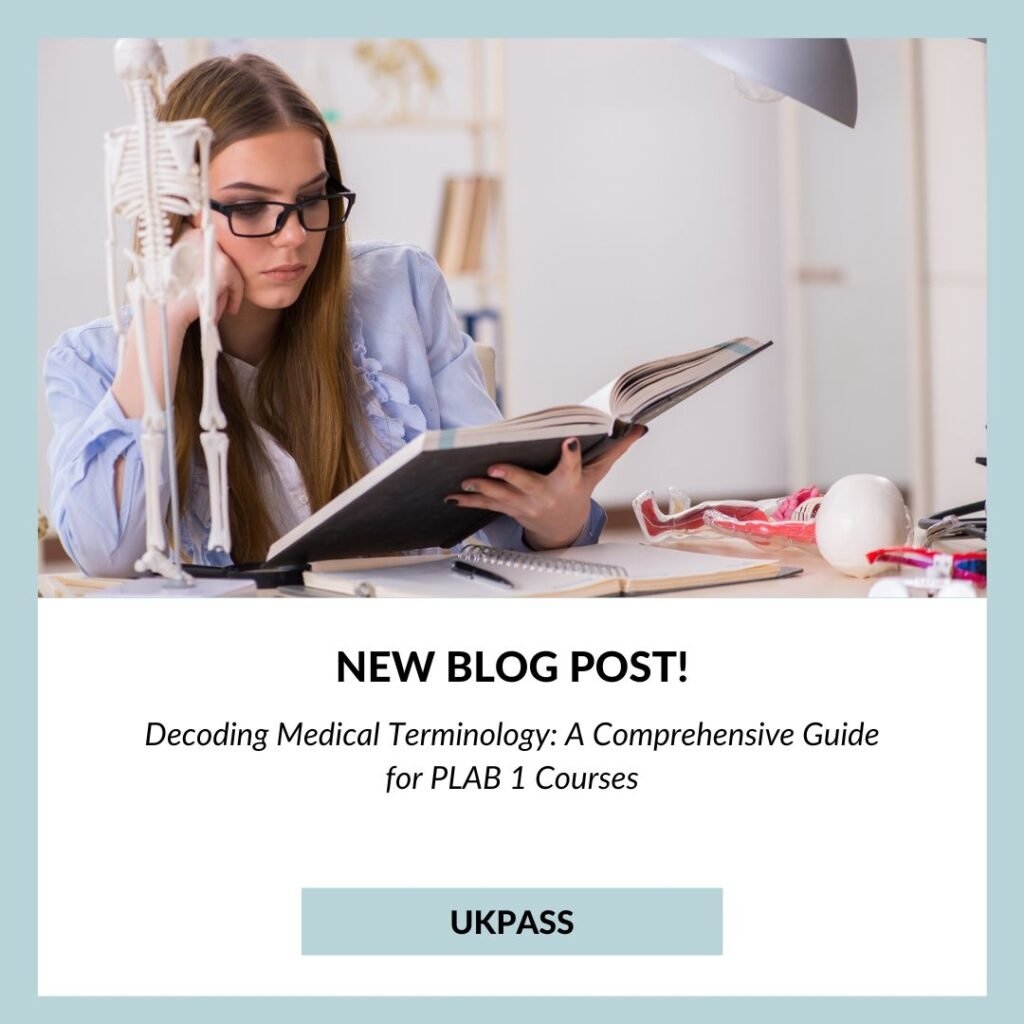Medical terminology can seem like a foreign language to many PLAB 1 aspirants. Unfamiliar words, complex roots, and intricate meanings can make studying for the PLAB 1 exam a daunting task. However, mastering medical terminology is crucial for success in this exam and your future medical career. This comprehensive guide will help you decode medical terms, making your PLAB 1 course preparation smoother and more effective.
Why is Medical Terminology Important for PLAB 1?
The PLAB 1 exam tests your knowledge of basic medical sciences. Understanding medical terminology is fundamental to comprehending medical concepts, conditions, and procedures. Familiarity with terms will not only aid in your PLAB 1 course but also lay a strong foundation for your future clinical practice. Accurate communication with colleagues and patients relies heavily on a shared understanding of medical terminology.
Breaking Down Medical Terms
Most medical terms have three components: a root word, a prefix, and a suffix. The root word provides the essential meaning, while prefixes and suffixes modify or add to that meaning. For example, in the word “cardiology,” the root “cardi” means heart, and the suffix “-ology” refers to the study of something.
Mastering Root Words
Root words are the building blocks of medical terminology. Familiarizing yourself with common root words from Greek and Latin can unlock the meanings of countless terms. Some examples of frequently used root words in medicine include:
- Cardi/o (heart)
- Ren/o (kidney)
- Hepat/o (liver)
- Neuro (nerve)
- Osteo (bone)
- Derm/a (skin)
- Ophthalm/o (eye)
- Gastr/o (stomach)
Understanding Prefixes and Suffixes
Prefixes and suffixes can alter the meaning of a root word or provide additional context. Common prefixes include “hyper-” (excessive), “hypo-” (deficient), “dys-” (abnormal), “anti-” (against), and “a-” (without). Suffixes like “-itis” (inflammation), “-ectomy” (surgical removal), “-pathy” (disease), “-rrhea” (flow/discharge), and “-plasia” (abnormal growth) are widely used in medical terms.
Creating a Medical Terminology Study Plan
Developing a structured study plan is key to mastering medical terminology for your PLAB 1 course. Start by creating a comprehensive list of common root words, prefixes, and suffixes. Organize them by body systems or specialties to make memorization easier. Use flashcards, mnemonics, or online quizzes to reinforce your learning. Regularly practice breaking down and understanding unfamiliar medical terms using your knowledge of roots, prefixes, and suffixes.
Integrating Medical Terminology into Your PLAB 1 Course Preparation
As you study for the PLAB 1 exam, actively apply your medical terminology knowledge. When learning about a new disease, condition, or procedure, break down the terms into their components and understand their meanings. For example, “hypertension” is made up of the prefix “hyper-” (excessive) and the root “tension” (pressure), meaning high blood pressure. This will not only solidify your grasp of medical terminology but also deepen your understanding of the subject matter itself.
Utilizing Resources for Medical Terminology
In addition to your PLAB 1 course materials, several resources can aid in mastering medical terminology:
- Medical dictionaries: Invest in a comprehensive medical dictionary or use online resources like MedlinePlus to look up unfamiliar terms.
- Flashcard apps: Use digital flashcard apps like Anki or Quizlet to create customized decks for studying root words, prefixes, and suffixes.
- Online quizzes: Participate in online quizzes and practice exercises on websites like Medical Terminology for Healthcare Professionals to test your knowledge.
- Anatomy and physiology resources: Consult anatomy and physiology books or websites like InnerBody to reinforce your understanding of body systems and their associated terminology.
- Medical abbreviations: Familiarize yourself with common medical abbreviations, such as “CBC” (complete blood count) and “MI” (myocardial infarction), as they are frequently used in medical settings.
Real-World Application
One of the best ways to solidify your medical terminology knowledge is to apply it in real-world scenarios. As you progress through your PLAB 1 course, practice analyzing medical case studies, patient reports, or research articles. Identify the root words, prefixes, and suffixes used in the text and ensure you comprehend their meanings in context. This exercise will not only reinforce your medical terminology skills but also prepare you for interpreting medical information in your future clinical practice.
Conclusion
Mastering medical terminology is an essential step in your PLAB 1 course preparation and future medical career. By breaking down terms into their components, understanding root words, prefixes, and suffixes, and consistently practicing, you can decode medical terminology with confidence. Incorporate this comprehensive guide into your study plan, utilize various resources, and apply your knowledge in real-world scenarios. With dedication and perseverance, you’ll be well-equipped to tackle the PLAB 1 exam and communicate effectively in the medical field.

